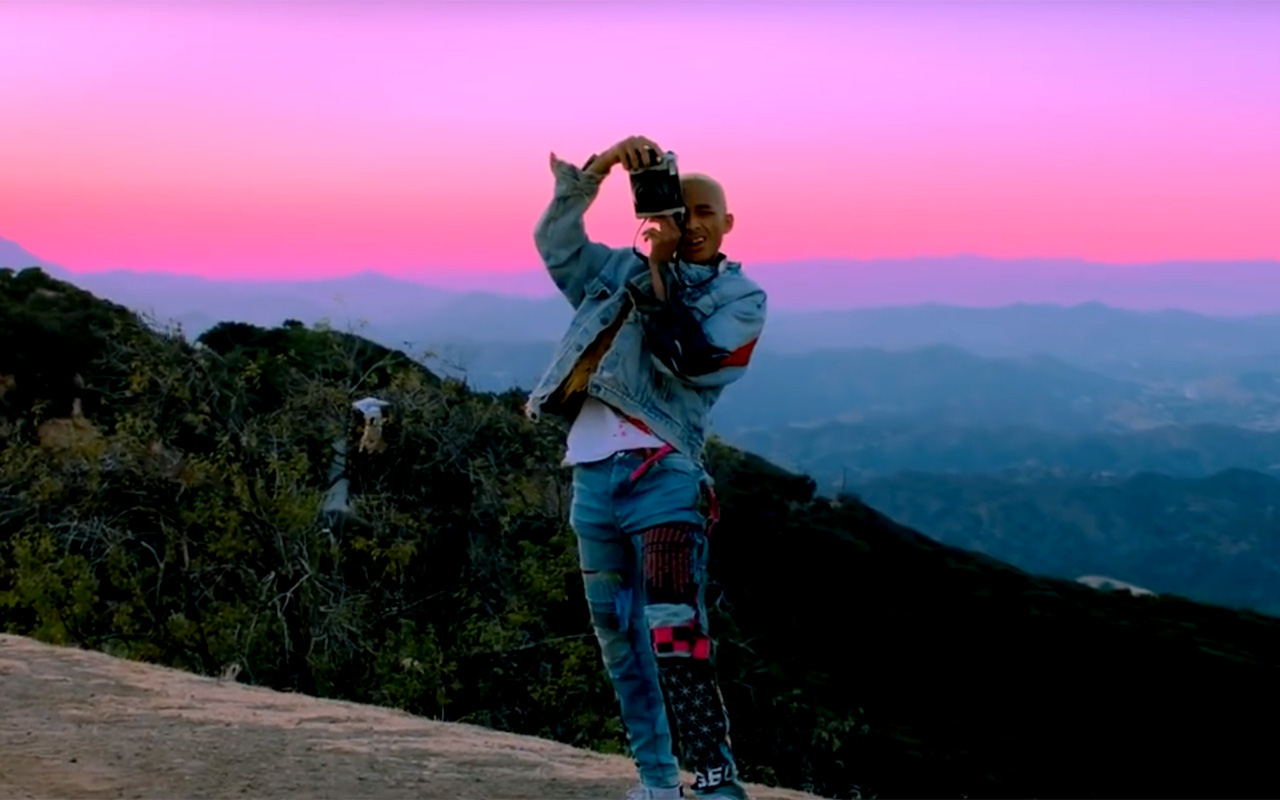On May 1, 2013, Jaden Smith iconically asked the interweb, “How Can Mirrors Be Real If Our Eyes Aren’t Real” via Twitter. Five years later, Smith has released two mixtapes, “The Cool Cafe” and its follow-up “Cool Tape Vol. 2,” and most recently dropped his debut studio album, “Syre: The Electric Album.”
Smith worked on “Syre” for four years. The project’s first single was released in 2016, and the full album was released exclusively on Instagram’s new IGTV feature on Smith’s 20th birthday, June 8. The initial IGTV release of “Syre: The Electric Album” launched the project as a visual album only. Four days later, the five-song project was released on music streaming services and became available as a standard audio file.
https://www.instagram.com/p/BapUSYJjZBp/?taken-by=c.syresmith
Smith was the first artist to release any sort of album via IGTV. However, other artists did take cracks at releasing music through the social media app’s normal feed. In November 2017, rapper B.o.B. released his album “The Upside Down” on Instagram. The album’s nine tracks were available through the artist’s Instagram page, and each song was accompanied by its own video. Although innovative, B.o.B. has now deleted the album off Instagram, but the audio tracks are still available on the rapper’s YouTube page.
Since the release of “Syre: The Electric Album,” Smith has been praised for his ability to release his music in new ways on a multitude of levels. By putting out his latest album on IGTV, Smith was able to push the videos for his songs simultaneously with their audio. Still, the eventual release of “Syre: The Electric Album” on music streaming services shows that IGTV was, in part, lacking.
So, what can streaming services offer that IGTV can’t?
Streaming giants Spotify and iTunes/Apple Music grant users a non-manual experience, meaning users can lock their phones or use other applications while listening to music. These apps do not need to be actively in use, or kept on users’ screens, for music to play.
In addition, both Spotify and Apple Music offer a facet of music streaming that most users find crucial: the capability to listen offline. Users are able to download tracks to their devices and enjoy their favorite songs without eroding their monthly data plan.
The free version of Apple Music, otherwise known as the now-vintage iTunes, offers that capability as well. However, iTunes still requires listeners to purchase music track by track, and unless users want to spend millions of dollars buying all the songs available on the company’s streaming service, their music library will be much more limited without the selection and streaming ability of Apple Music.
Through the free version of Spotify, listeners have limited access to music that can only be listened to online. And even though users can see information that corresponds to the track they are listening to, they have a decreased ability to organize songs in their desired order. Users can pick a song or a playlist and listen to their desired track once. After that, they must submit to ads and other suggested tracks supplied by the streaming service.
What’s the deal with releasing music via IGTV?
Before Smith released “Syre: The Electric Album” onto Apple Music and Spotify, users could only experience his latest music on his terms, those terms being that users had to have some sort of access to IGTV via an internet connection and keep Smith’s music videos active on their screens.
It seems as though releasing music through IGTV works a lot like the old-fashioned route of releasing music via YouTube. Both applications have optional visual and video capability and are technically limitless with internet connection. Artists even have their own IGTV “channel,” a signature that’s blatantly reminiscent of YouTube.
However, neither IGTV nor YouTube can function in the background of others. Without YouTube’s video playlist function, IGTV users must manually choose their next track. Hence the name, IGTV works a lot like flipping through television channels.
It’s also worth mentioning that YouTube now has a premium subscription service that includes YouTube Music, its own music streaming service that’s, of course, ad-free.
So, perhaps IGTV releases really are in a league of their own. As of now, they are both money-free and ad-free. Artists can release high-quality music without actually charging users for access. And on IGTV, like YouTube, the watchers can also become the creators. Instagram users may not have the creative team and state-of-the-art equipment of Jaden Smith, but they do have the capability and freedom to upload their work to their own IGTV channels. This is where small players can catch up. The core tenets behind good video content all still apply, and there are powerful video editing apps, such as Instasize, that can be used on the go. This gives smaller channels the ability to create great content at a moment’s notice.
The only let downs for IGTV are that it’s completely manual and exclusively online: users can’t create playlists, they can’t organize tracks to auto-play in any order, and they must keep IGTV on their screens using an internet connection.
Like YouTube, IGTV is completely visual. And, it offers artists a chance to better publicize their music videos, in that if users can only access the audio of songs through their respective music videos, it follows that said videos get vastly more views.
Because of its inherent similarity to the classically free version YouTube on multiple levels, it seems that IGTV isn’t necessarily “what’s next” for music streaming.
However, IGTV visual album releases could be a new frontier unexplored by all except Jaden Smith. For the artist that wants to release a potentially all-visual album during which listeners possess limited ability to select tracks to watch, IGTV seems to be a solid choice.
It follows that IGTV is one of a kind for this exact reason. Because watchers/listeners must submit to the order in which creators intend their music to be experienced, creators have the expanded freedom to tailor how their art is consumed. This can potentially boost the ability of artists to explain their art because they control the technical form through which it is experienced. If streaming was made with the listener in mind, IGTV was made for the benefit of creators.
If more artists follow Smith’s lead and release music exclusively through IGTV, the musical component of their art will no longer take center stage. IGTV allows for digital art in its fullest form: a mix of sound and moving visuals that create a full experience.
That ability to create a full experience can bring artists closer to fans through an enhanced, shared understanding of the artist’s work. Perhaps IGTV could be “what’s new” in connecting artists and fans through artists’ creation

















